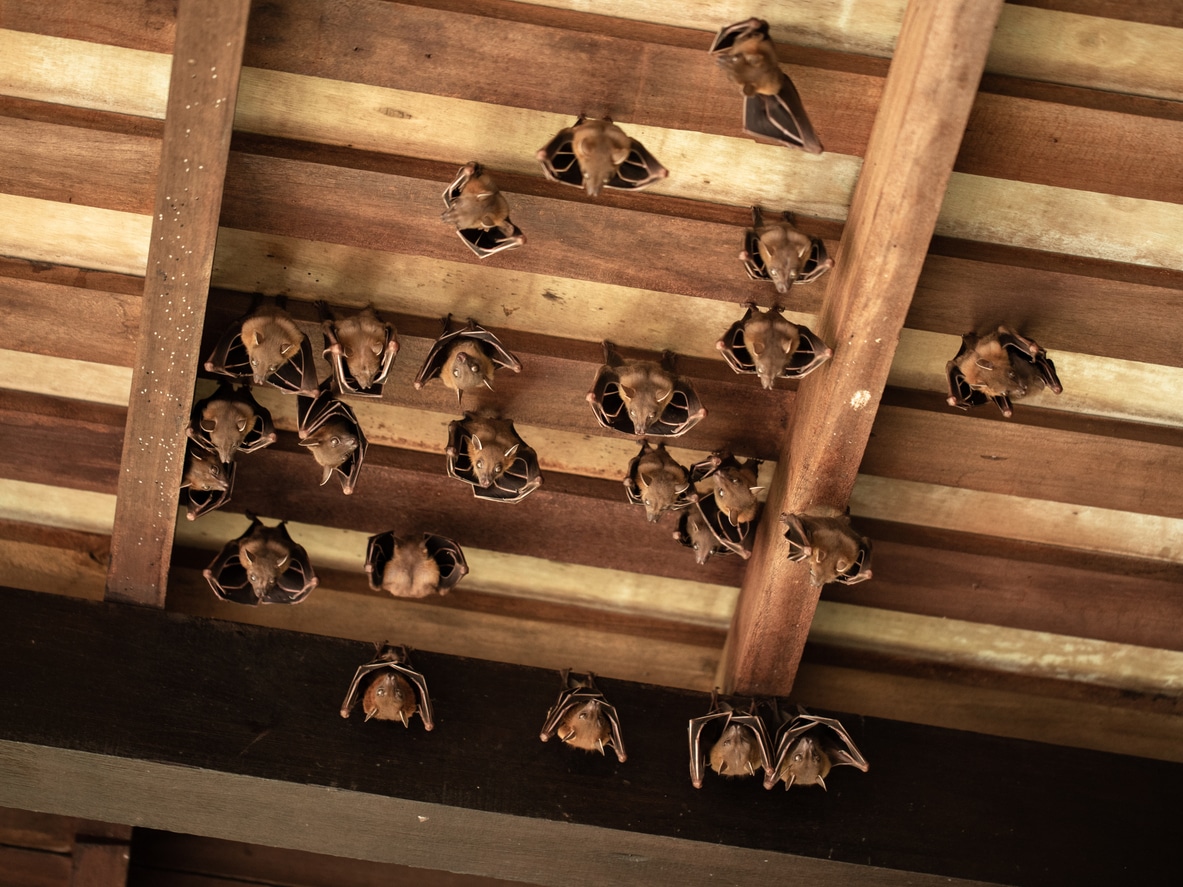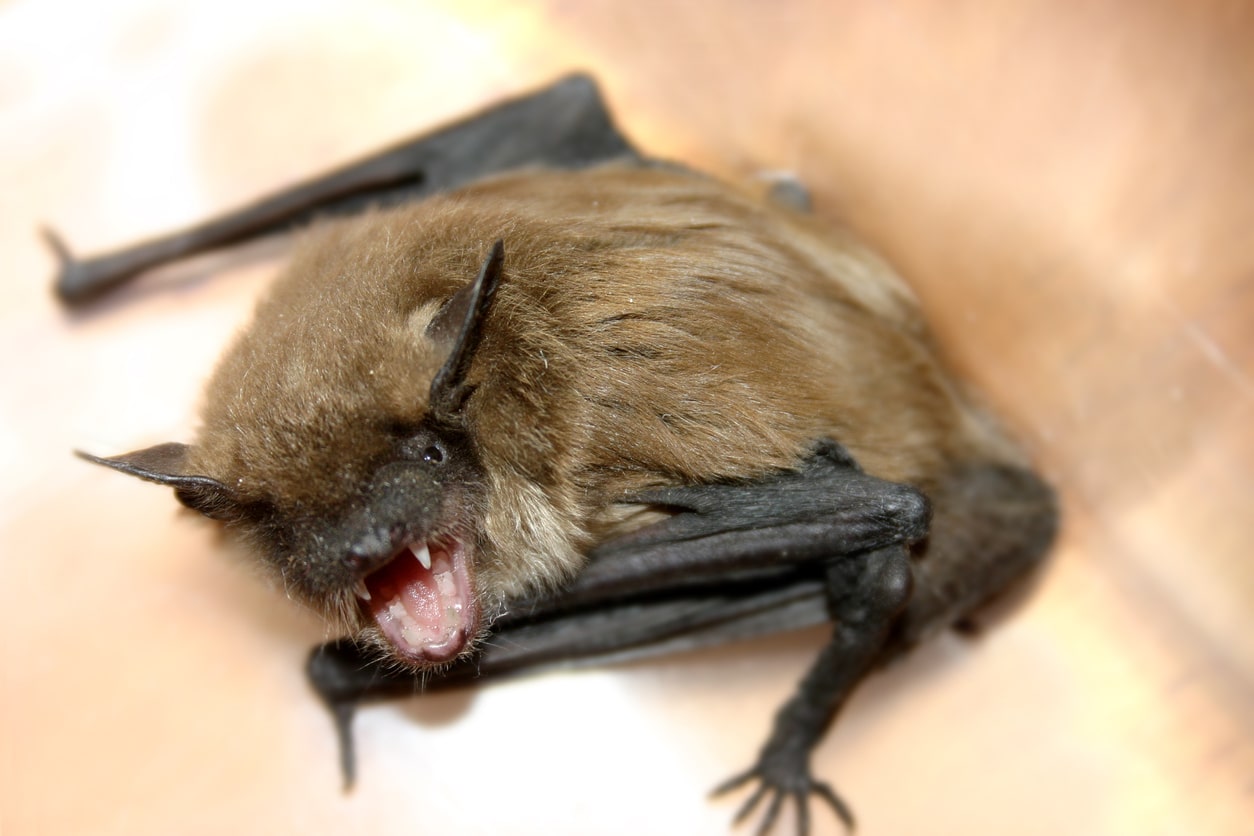When the temperatures start to drop, you’re not the only one looking for a warm…

Protections for Bats & Why Humane Removal for Bats is Vital
Bats play a crucial role in ecosystems across the United States, helping control insect populations and contributing to pollination. However, when a bat finds its way into your home or attic, it can quickly become a wildlife problem. While it’s essential to respect these creatures, it’s equally important to ensure your property remains safe and free from a bat infestation.
In this guide, we’ll cover the steps for humane bat removal while keeping your family and pets, such as dogs and cats, safe. We’ll also explore how to prevent future bat issues through bat exclusion and proper property maintenance.
Why You Need to Remove Bats Humanely: Bats Have Squatter’s Rights
In Michigan and many other states, bats are legally protected, meaning it is illegal to harm or remove them, especially during certain times of the year. Bats play a vital role in the ecosystem by controlling insect populations, and some species are endangered or threatened. This is why bats are given protection from harmful removal methods.
During their maternity season, when bats are raising their young, it’s illegal to block or remove them from their roosts. Removing or killing bats during this time can result in fines and penalties. Instead, humane bat removal practices, such as installing check valves for bats, are recommended. Check valves are one-way devices that allow bats to leave the property but prevent them from returning. This ensures that bats are excluded humanely without causing harm, complying with legal protections.
Understanding Humane Bat Removal & Safety
If you encounter a bat inside your home, your first thought might be to panic or try to handle the situation yourself. However, safely removing a bat requires care and an understanding of bat behavior. Bats are generally not aggressive, but they can carry rabies, which is why handling them without proper precautions is dangerous.
According to the Centers for Disease Control and Prevention (CDC), bats are one of the primary wild animals that can transmit rabies in the United States. That said, most bats are not infected and rarely pose a threat if handled correctly.
Steps to Humanely Removing a Bat
The first step in humane bat removal is to close off the area where the bat is present. Open windows and doors in the room, allowing the bat to fly out on its own. Bats use echolocation to navigate, so they will eventually find their way out.
Never try to handle a bat with bare hands. Instead, use thick gloves or wait for the bat to land and gently cover it with a container.
Once contained, release the bat outside, preferably after dark when bats fly. If you’re not comfortable doing this, professional bat removal services are available and can assist with pest control measures. The safest and most humane way to handle any pest infestation is by contacting a reliable pest control company in your area.
Preventing a Bat Infestation
If you’ve encountered a bat in your home, you may wonder how it got in and whether there are more bats lurking. In many cases, bats can enter through small openings around vents, chimneys, or cracks in walls. These creatures often roost in groups called bat colonies, which can lead to a bat infestation if not addressed. Humane bat removal involves not only getting rid of the immediate problem but also ensuring bats don’t return.
The process of bat exclusion is the best way to prevent bats from entering your home. Bat exclusion involves sealing all potential entry points, but it’s crucial not to do this during the maternity season when baby bats are still in the roost, as this would trap them inside. Instead, install one-way exit devices that allow bats to leave but prevent them from re-entering. The Michigan Department of Natural Resources recommends these methods as part of humane bat control.
Installing a bat house on your property is another effective way to relocate bats. Bats live in both natural and man-made structures, and providing a safe alternative roost can help reduce the chances of them nesting in your home. Proper installation of rodent control measures, such as sealing cracks and keeping wildlife control efforts consistent, also helps mitigate wildlife problems.
Professional Help for Bat Removal & Attic Restoration
In some cases, especially if you have a bat colony roosting in your attic or basement, it’s best to seek help from professional bat removal services. A licensed wildlife rehabilitator or animal control expert can assess the situation and determine the most humane and effective way to rid of bats. According to the U.S. Fish and Wildlife Service, it’s essential to choose experts who prioritize the health of the animals and use non-lethal methods.
Beyond bat control, there may be a need for attic restoration once the bats are removed. Bats can leave behind droppings (guano), which can carry health risks such as histoplasmosis, a respiratory illness. Professional restoration services will clean and sanitize the affected areas, ensuring no lingering health hazards remain. They will also assess your foundation drainage system and home structure to help prevent future bat problems.
If you live in areas where bats are common, like Michigan, it’s essential to remain vigilant about home maintenance. Keeping your gutters and downspouts clear, sealing any small openings, and regularly inspecting your attic can prevent future bat infestations. Professional pest control and bat removal services are readily available in most states and can provide ongoing support to keep your home bat-free.
Trust Creature Control for Humane Bat Control in Michigan
Creature Control is an industry leader when it comes to managing wildlife in a way that protects both animals and ecosystems. By focusing on humane practices, Creature Control resolves pest issues effectively and contributes to the preservation of local biodiversity.Partner with the leader in reliable and humane wildlife control solutions. The Creature Control team is ready to help you manage wildlife issues while supporting the health and sustainability of Michigan’s ecosystems. Contact us here, or call us at 1-800-441-1519 to get started.
Contact Us Today!
"*" indicates required fields
Call Us
For Immediate Help
Call 1-800-441-1519 to talk to one of our local wildlife experts. Or, fax us at (734) 551-9795.
Business Hours
Monday – Friday: 8 a.m. to 6 p.m
Saturday: 8 a.m. to 2 p.m.
Sunday: 8 a.m. to 12 p.m.
For After-Hours Help
Call (877) 623-9190. For after-hours emergencies, please be aware that additional charges will apply. We can also be reached by fax at (734) 551-9795.


